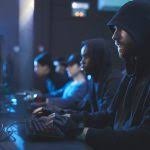Why Deepfake Detection is Critical for Military Strategy and Modern Warfare.
Within the internet lurks a particularly insidious threat of the deepfake. These sophisticated manipulations of audio and visual content pose a significant challenge to national security, particularly in the context of military strategy and modern warfare, making robust deepfake detection capabilities not just desirable, but essential.
Deepfakes, created using advanced artificial intelligence, can convincingly distort reality, creating fabricated scenarios that are increasingly difficult to discern from genuine content. This ability to manipulate information holds profound implications for military operations, intelligence gathering, and strategic communications.
Distorting Reality, Undermining Operations:
The potential for deepfakes to undermine military operations is vast. Imagine:
- Fabricated Orders: A deepfake video featuring a commanding officer issuing contradictory or strategically unsound orders could sow confusion and chaos amongst troops, potentially leading to mission failure.
- Compromised Intelligence: Deepfakes could be used to manipulate satellite imagery or reconnaissance footage, presenting a false picture of enemy activity or battlefield conditions. This could lead to disastrous strategic decisions based on faulty intelligence.
- Damaged Reputation: A deepfake video portraying military personnel committing unethical acts could severely damage public trust, erode morale, and create diplomatic tensions.
In each of these scenarios, the ability to quickly and accurately identify deepfakes is crucial. Without it, military leaders risk making critical decisions based on misinformation, with potentially catastrophic consequences.
Safeguarding Communication and Verifying Intelligence:
The importance of deepfake detection extends beyond the battlefield. Secure communication channels and the verification of intelligence reports are fundamental to effective military operations. Deepfakes can be employed to compromise both:
- Secure Communication Channels: Deepfakes can mimic the voice and appearance of key personnel, allowing adversaries to infiltrate secure communication channels and extract sensitive information. Identifying these manipulated communications is vital for maintaining operational security.
- Intelligence Verification: Intelligence reports, even seemingly credible ones, can be tainted with deepfake-generated evidence. Robust deepfake detection tools can help analysts verify the authenticity of information and prevent the dissemination of false or misleading intelligence.
Countering Psychological Warfare and Maintaining Morale:
Beyond operational risks, deepfakes can be weaponized as tools of psychological warfare. Adversaries can leverage deepfake technology to:
- Disseminate Propaganda: Fabricated videos and audio recordings can be used to spread misinformation, incite unrest, and undermine public support for military operations.
- Target Specific Individuals: Deepfakes can be used to target individual military personnel, creating personalized propaganda campaigns designed to demoralize them or pressure them to leak sensitive information.
- Sow Discord: Deepfakes can be used to create division within military ranks by fabricating conflicts or tensions between different units or individuals.
By identifying these deepfake-driven misinformation campaigns, military organizations can proactively counteract their effects, protecting the morale and operational effectiveness of their forces.
The Future of Deepfake Detection in Military Strategy:
The development and deployment of robust deepfake detection technologies is no longer a luxury but a necessity for modern military forces. This requires:
- Investing in Research and Development: Continued investment in AI-powered deepfake detection technologies is crucial to stay ahead of evolving manipulation techniques.
- Training and Awareness: Military personnel need to be trained to recognize the potential indicators of deepfakes and understand the risks they pose.
- Collaboration and Information Sharing: Sharing intelligence and best practices on deepfake detection between allied nations is vital to strengthen collective defense capabilities.
In conclusion, deepfake detection is critical for safeguarding military operations, maintaining the integrity of intelligence, and protecting the morale of troops in the face of increasingly sophisticated digital threats. By recognizing the importance of this emerging threat and investing in the development and deployment of effective detection tools, military organizations can ensure that decisions are based on accurate information and that operations are protected from manipulation in the digital battlefield. The ability to discern truth from fabrication will be a defining factor in the future of military strategy and modern warfare.






